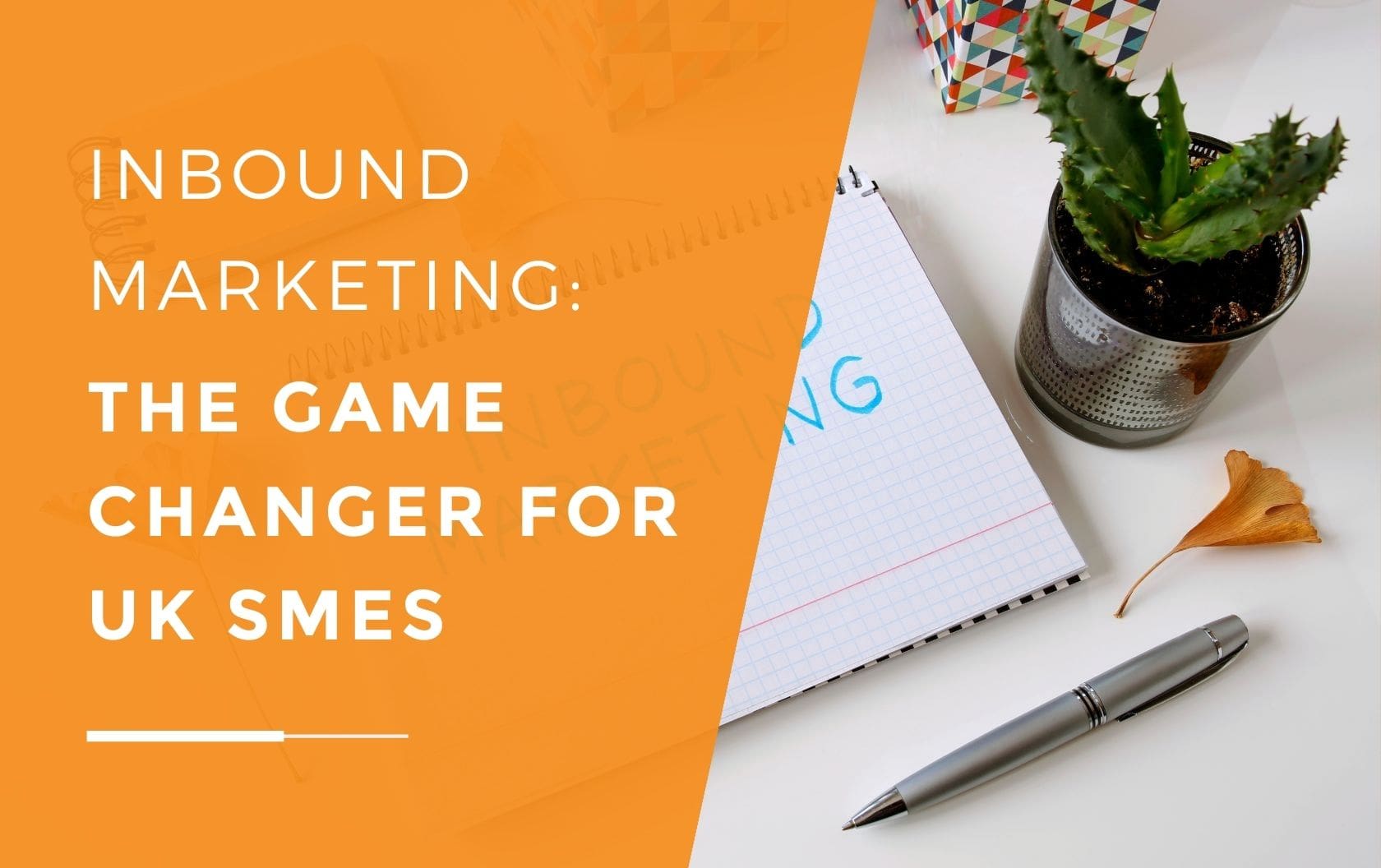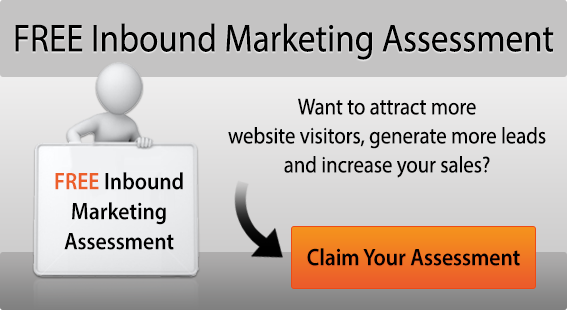Attract More Customers Using The 4 Stages Of Inbound Marketing
by Will Williamson on 11-Jan-2023 13:00:00

Inbound marketing consists of various strategies that naturally and unobtrusively get the audience’s attention to your products and services. The sales potential of inbound marketing hinges on the creation of valuable content and personalised online experiences, and how well you can promote these to your ideal customers.
Unlike ‘cold’ or outbound methods, you don’t normally expect to make a sale immediately with inbound marketing. Instead, you build a relationship of trust and credibility in stages – which leads to a better conversion rate, higher value sales, and better customer retention.
There are four main stages of inbound marketing you should be aware of:
1) Attract new leads
The goal of the ‘attract’ stage is raising awareness among your ideal customer base. Here, you want to create varied content that addresses your customer needs and pain points and publish it in the online spaces your audience visits.
At this stage, content doesn’t need to be (and shouldn’t be) “salesy”. Prospects are aware of a challenge that needs to be addressed and are educating themselves on potential solutions. Purely informational content is your best chance of getting your audience’s attention, as long as it’s relevant. Be informative, consultative, and supportive, without making the content directly about you or your business at all. Just provide free advice and information. This type of content can help make your brand memorable and position your company as a reliable option when prospects are better informed and in a position to start thinking about purchasing a solution.
Tools you can use include written blogs and video content on your website and in social media, paid ads and landing pages, gated incentive content, and SEO. Your goal should be for prospects to make contact with you in some way – through a social media or website message, by making a phone call, or by signing up for your email list.
2) Engage your leads
The ‘engagement’ stage helps nurture leads into paying customers by delivering engaging experiences and supporting content that reinforces the prospect’s trust in your brand. At this stage, the prospect is considering different solutions to their challenges, without (yet) weighing up different suppliers. They may not have set a budget yet and will need more time and information before committing to a sale
Once leads discover that you offer a potential solution, they’re likely to contact you to request more information, clarify doubts, or simply to “test the waters” and see how their enquiry is handled. The best way to keep in touch during this stage is email marketing, so it’s essential to give prospects every opportunity to opt-in to email communications through contact forms on each page of your site and blog.
The key is handling all enquiries with the goal of providing value. If a prospect is impressed enough with your ‘awareness content’ to sign up for your emails, they will expect more of the same quality and relevance going forward. All interactions should be personalised and clearly demonstrate your interest in offering solutions, instead of just selling products.
Resist jumping the gun and pushing sales too early at this stage. To generate engagement, you’ll want to focus on relationship building, responding to customer cues and providing the right information at the right time to nurture them through the process.
Tools you can use include email automation content flows to ‘drip feed’ material to prospects following behavioural triggers (e.g. someone clicks a link in a marketing email), webinars, ebooks, and articles. Some prospects will already be in the consideration stage when they make first contact, so you should publish regular material on your blog that discusses the value of your products and services in greater depth – without getting too technical or feature-focused.
3) Convert your leads into customers
An ‘engaged lead’ isn’t the same as a committed customer, so sometimes you’ll need to give prospects a gentle ‘push’ towards conversion – i.e. investing their money with your business as opposed to a competitor. At this stage, your prospects are well-informed and are ready to make a purchase decision. Remain solutions-focused, but you can be more direct and sales-oriented in your content at this stage, actively promoting the features and benefits of your solution and how these compare with other options on the market. You may also wish to address specific questions or sales objections in your blogs and web pages and explain the technical aspects of your proposition in greater detail.
You’ll want to create personalised and relevant offers at every stage of the sales funnel, ensuring they gradually build enthusiasm to the point that converting seems the natural thing to do.
To avoid sales falling at the final hurdle, you’ll need to anticipate the reasons why a lead may hesitate before converting. Do they need more technical information? Testimonials or case studies? A free trial? A call back? Try to anticipate the sales objections you’re likely to face and address these in your content - by using ‘decision stage’ keywords in some of your blogs you may even attract new leads ready to make an immediate purchase.
4) Delight your customers
The process of inbound marketing doesn’t end with the first sale. The strategy is equally effective at increasing customer retention and encouraging a higher lifetime value from your existing customers. Happy customers stick around for longer. You’ll also want your customers to be so satisfied with their experience that they recommend your company to others, provide glowing online reviews, and share your content with their networks on social media.
The last stage of inbound marketing helps you achieve referrals and boost your sales organically by delighting your customers in ways they didn’t expect. For example, you can offer a freebie post-conversion, send them personalised offers, or email them on their birthday. You may also want to do social media monitoring to get insights into how to delight your customers. In response, some people may promote your content or refer your business spontaneously, but you normally have to ask. It’s ok to use your email list to send out occasional customer satisfaction or feedback surveys to your current customers and to proactively ask for shares, recommendations, and written testimonials.
Next steps
At JDR, we offer full marketing support for each stage of the inbound marketing process, creating relevant and valuable content for your customers and helping increase your conversion and retention rate. To find out more, please call 01332 343281 today.
Image Source: Pexels
- Inbound Marketing (SEO, PPC, Social Media, Video) (824)
- Strategy (363)
- Sales & CRM (195)
- Marketing Automation & Email Marketing (190)
- Business Growth (164)
- Website Design (160)
- Hubspot (138)
- Lead Generation (115)
- Google Adwords (98)
- Content Marketing (94)
- Conversion (48)
- Case Studies (47)
- News (47)
- Ecommerce (39)
- Webinars (34)
- SEO (24)
- AI (20)
- Events (19)
- Video (17)
- LinkedIn Advertising (15)
- Video Selling (15)
- Software training (13)
- Niche business marketing (11)
- The Digital Prosperity Podcast (10)
- Facebook Advertising (6)
- HubSpot Case Studies (5)
- December 2025 (10)
- November 2025 (6)
- October 2025 (17)
- September 2025 (16)
- August 2025 (14)
- July 2025 (14)
- June 2025 (5)
- May 2025 (19)
- April 2025 (15)
- March 2025 (13)
- February 2025 (13)
- January 2025 (8)
- December 2024 (2)
- November 2024 (4)
- October 2024 (21)
- September 2024 (4)
- August 2024 (8)
- July 2024 (14)
- June 2024 (16)
- May 2024 (25)
- April 2024 (15)
- March 2024 (18)
- February 2024 (5)
- January 2024 (10)
- December 2023 (6)
- November 2023 (10)
- October 2023 (13)
- September 2023 (12)
- August 2023 (14)
- July 2023 (13)
- June 2023 (14)
- May 2023 (15)
- April 2023 (13)
- March 2023 (14)
- February 2023 (13)
- January 2023 (15)
- December 2022 (13)
- November 2022 (6)
- October 2022 (8)
- September 2022 (22)
- August 2022 (15)
- July 2022 (13)
- June 2022 (16)
- May 2022 (14)
- April 2022 (16)
- March 2022 (17)
- February 2022 (11)
- January 2022 (8)
- December 2021 (6)
- November 2021 (7)
- October 2021 (11)
- September 2021 (10)
- August 2021 (7)
- July 2021 (7)
- June 2021 (4)
- May 2021 (4)
- April 2021 (1)
- March 2021 (3)
- February 2021 (5)
- January 2021 (4)
- December 2020 (7)
- November 2020 (6)
- October 2020 (5)
- September 2020 (9)
- August 2020 (18)
- July 2020 (17)
- June 2020 (17)
- May 2020 (10)
- April 2020 (21)
- March 2020 (24)
- February 2020 (21)
- January 2020 (12)
- December 2019 (23)
- November 2019 (12)
- October 2019 (14)
- September 2019 (16)
- August 2019 (15)
- July 2019 (13)
- June 2019 (6)
- May 2019 (8)
- April 2019 (4)
- March 2019 (2)
- February 2019 (2)
- January 2019 (2)
- December 2018 (3)
- November 2018 (24)
- September 2018 (11)
- August 2018 (9)
- June 2018 (3)
- May 2018 (6)
- April 2018 (14)
- March 2018 (12)
- February 2018 (16)
- January 2018 (15)
- December 2017 (15)
- November 2017 (18)
- October 2017 (23)
- September 2017 (19)
- August 2017 (28)
- July 2017 (27)
- June 2017 (25)
- May 2017 (18)
- April 2017 (17)
- March 2017 (16)
- February 2017 (17)
- January 2017 (14)
- December 2016 (21)
- November 2016 (27)
- October 2016 (25)
- September 2016 (16)
- August 2016 (20)
- July 2016 (19)
- June 2016 (14)
- May 2016 (20)
- April 2016 (24)
- March 2016 (22)
- February 2016 (28)
- January 2016 (27)
- December 2015 (28)
- November 2015 (19)
- October 2015 (9)
- September 2015 (12)
- August 2015 (5)
- July 2015 (1)
- June 2015 (10)
- May 2015 (3)
- April 2015 (11)
- March 2015 (14)
- February 2015 (15)
- January 2015 (12)
- December 2014 (2)
- November 2014 (23)
- October 2014 (2)
- September 2014 (2)
- August 2014 (2)
- July 2014 (2)
- June 2014 (7)
- May 2014 (14)
- April 2014 (14)
- March 2014 (7)
- February 2014 (2)
- January 2014 (7)
- December 2013 (9)
- November 2013 (14)
- October 2013 (17)
- September 2013 (3)
- August 2013 (6)
- July 2013 (8)
- June 2013 (4)
- May 2013 (3)
- April 2013 (6)
- March 2013 (6)
- February 2013 (7)
- January 2013 (5)
- December 2012 (3)
- November 2012 (2)
- September 2012 (1)
Subscribe by email
You May Also Like
These Related Blogs

What Does Lead Generation Mean & Why Is It Important?
Have you ever received a cold call? Have you had to listen to an unwanted sales pitch over the phone or through email? That is a form of lead generati …

Inbound Marketing: The Key to Sustainable Business Growth
Small and mid-sized businesses often struggle to achieve consistent and sustainable growth. A typical SME sales pattern is a sudden flurry of sales – …

Inbound Marketing: The Game Changer For UK SMEs
Every business is unique, and so are their marketing needs. While traditional ‘outbound’ marketing tactics such as cold calling and interruption adver …




